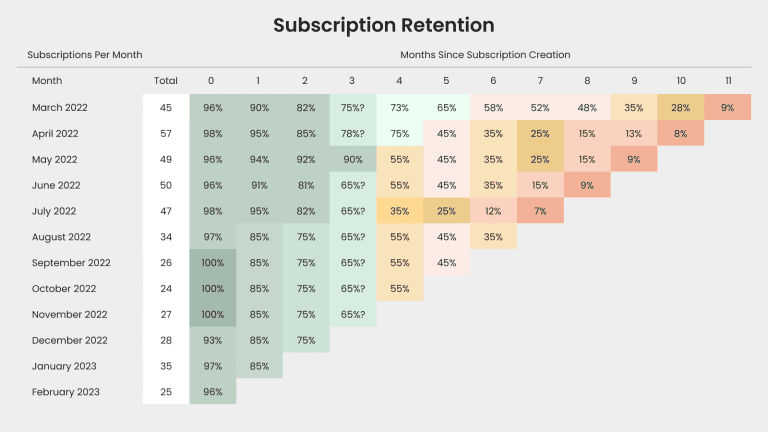Churn Analysis in SaaS: How to Find Patterns and Fix Retention

Churn analysis is the process of examining why customers cancel their subscription or stop using your product. It combines both quantitative data (like usage patterns, support tickets, or contract data) and qualitative feedback (like exit interviews or surveys) to identify common churn triggers. For SaaS companies, churn analysis is essential for improving retention and shaping Customer Success strategy.
Why do customers really churn?
What signals indicate a customer is at risk?
Churn rarely happens without warning. Some of the most common signals include declining product usage, negative NPS feedback, unresolved support issues, or a drop in the number of active users. For example, in product-led SaaS, a sudden drop in weekly active users or a sharp decline in feature usage can be a leading indicator. Platforms like Customerscore.io automatically surface these signals using behavioral data.
How do you perform a churn analysis?
A basic churn analysis includes:
- Segmenting churned users by plan, company size, lifecycle stage, or industry
- Identifying patterns in product usage, login frequency, support tickets, and feature adoption
- Running exit surveys or customer interviews to gather qualitative feedback
- Comparing churned vs retained cohorts to spot behavioral differences
You can run this as a one-off project or automate it with tools like Customerscore.io that track churn signals continuously.
Why cohort analysis is crucial for churn?
Cohort analysis allows you to group users by shared traits — such as signup month, pricing tier, or acquisition channel — and track their retention behavior over time. For example, you might find that users acquired through a specific campaign churn faster than those from another source. This helps you uncover not just that churn happens, but when and why.

What types of churn should I track?
Not all churn is created equal. Track:
- Voluntary churn – when customers actively cancel
- Involuntary churn – due to failed payments or inactivity
- Logo churn – number of accounts lost
- Revenue churn – value of lost ARR or MRR
By understanding the type of churn, you can apply the right retention strategies.
What can you do with churn insights?
How can churn data influence Customer Success?
Once you know why customers leave, you can build smarter playbooks to prevent it. For example, if you learn that a segment of users churns due to confusion with onboarding, you can introduce a product tour or assign a CSM for their first 30 days. Churn analysis is only valuable when it leads to action.
How do top SaaS companies use churn analysis?
High-performing SaaS companies use churn insights to:
- Refine their ideal customer profile (ICP)
- Score customers based on churn risk
- Personalize retention campaigns or email outreach
- Prioritize product roadmap improvements
FAQ
How often should I perform churn analysis?
Ideally, you should monitor churn monthly and run a deeper cohort-based churn analysis quarterly. Real-time tools can surface trends continuously.
What data sources do I need for churn analysis?
Product usage data, CRM activity, support tickets, NPS/CSAT scores, contract metadata, and exit feedback are the most useful.
Can I automate churn analysis?
Yes. Platforms like Customerscore.io automate churn risk scoring and alert Customer Success teams when key metrics drop below threshold.
Is churn analysis only for Customer Success teams?
No. While CS leads the effort, product, marketing, and sales teams all benefit from churn insights — especially when shaping ICP, messaging, and onboarding.
